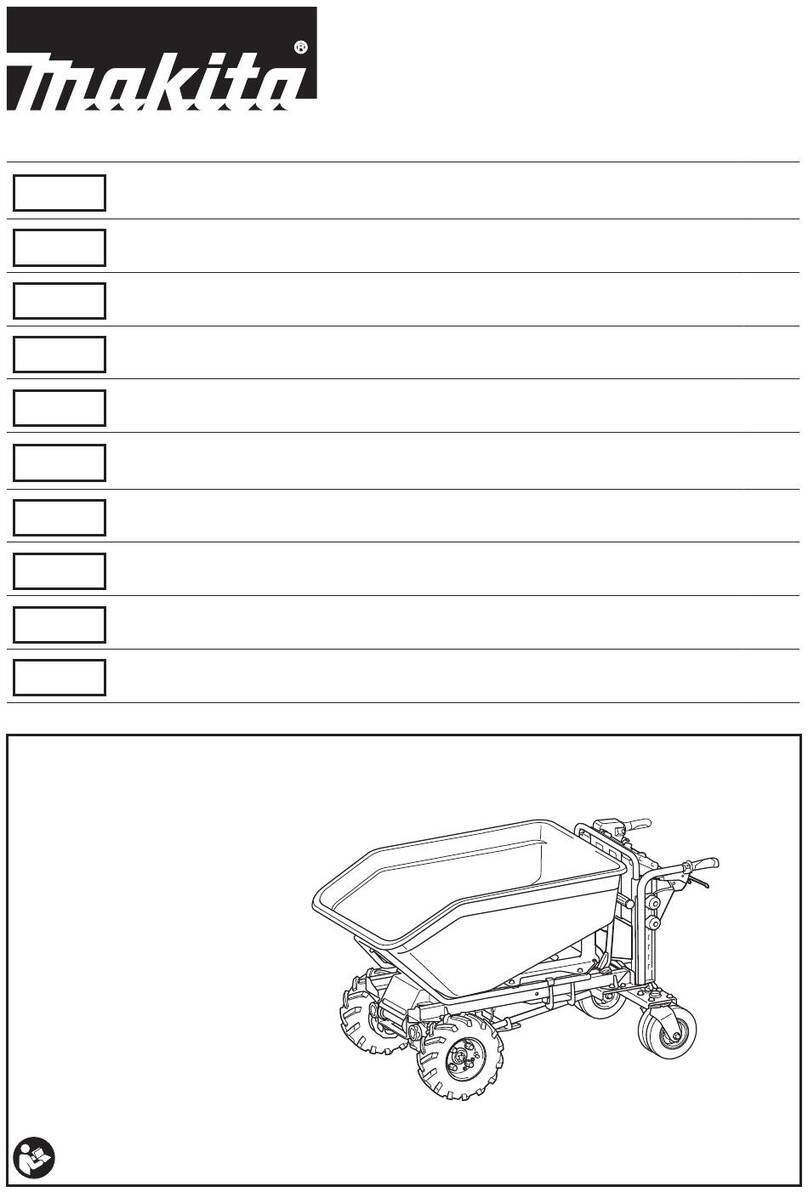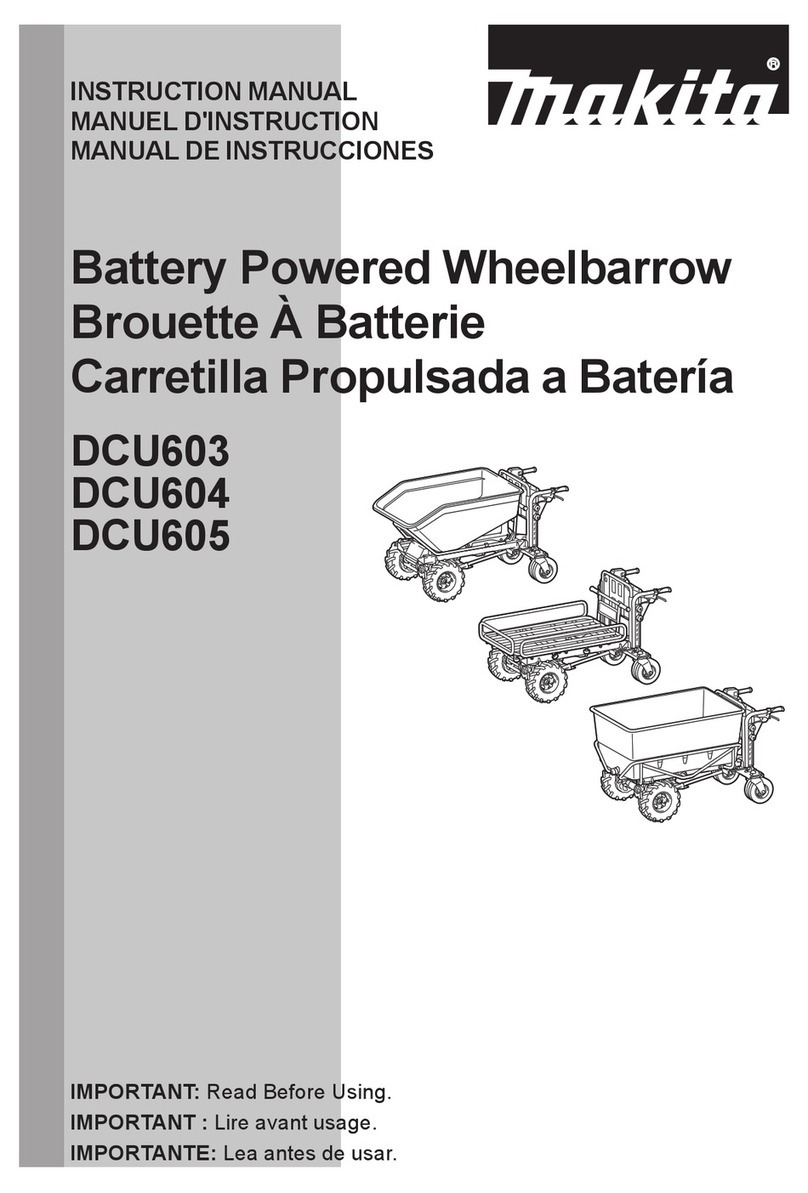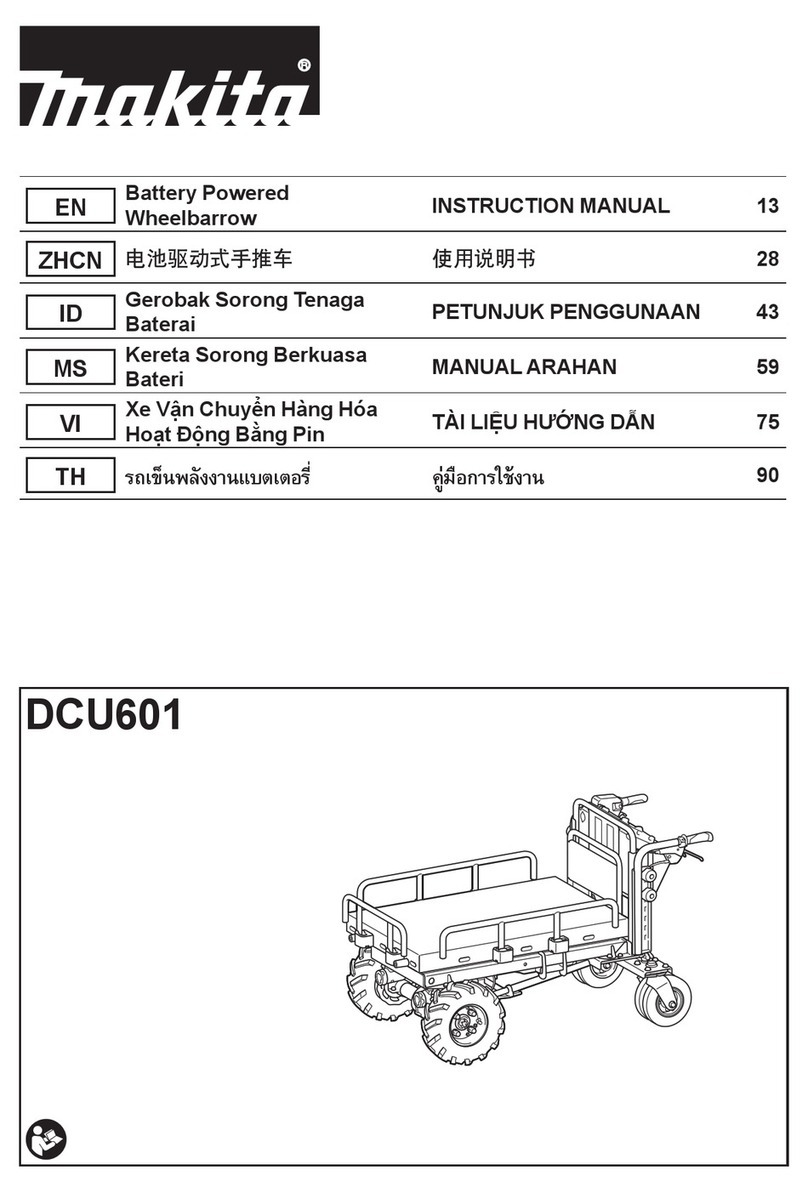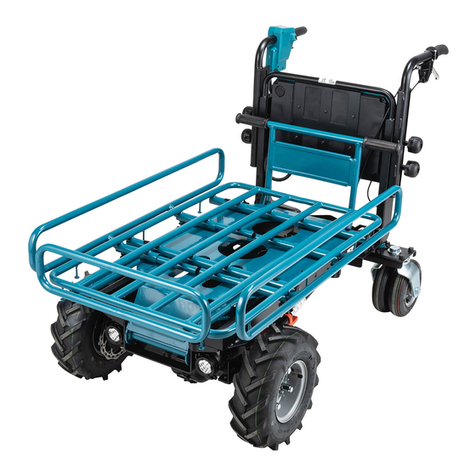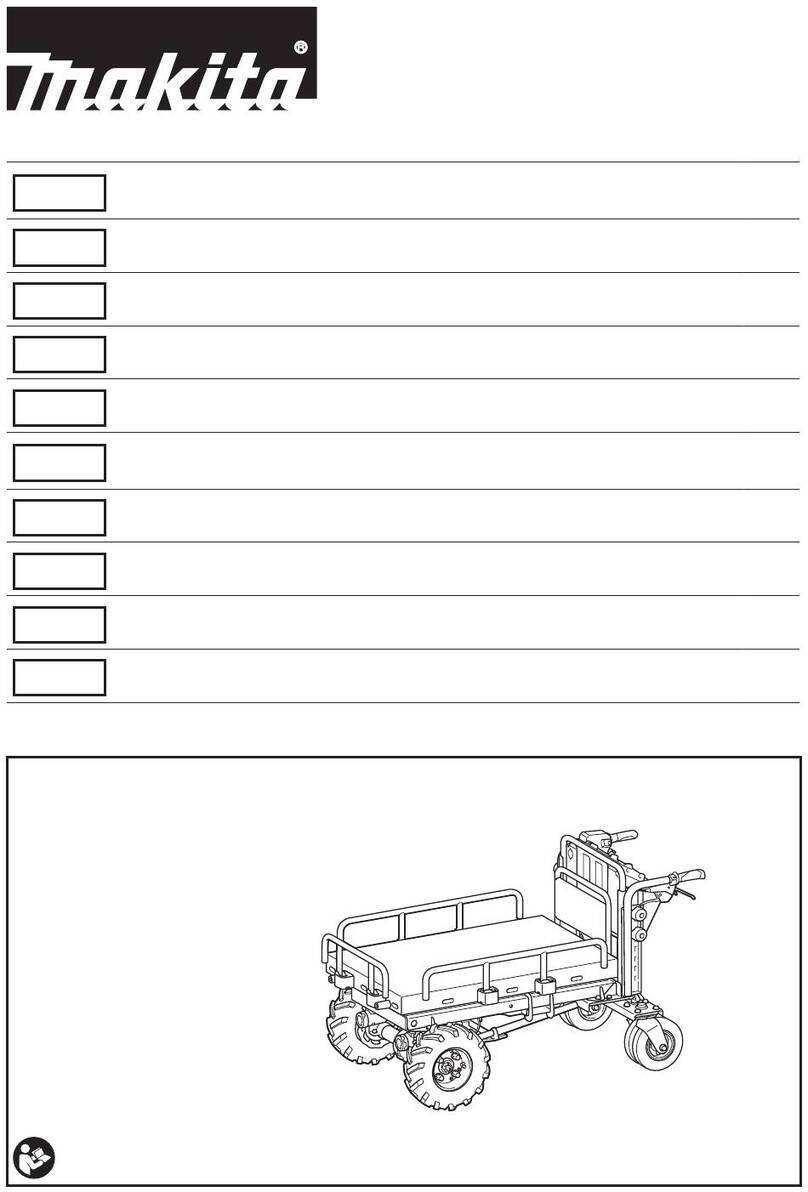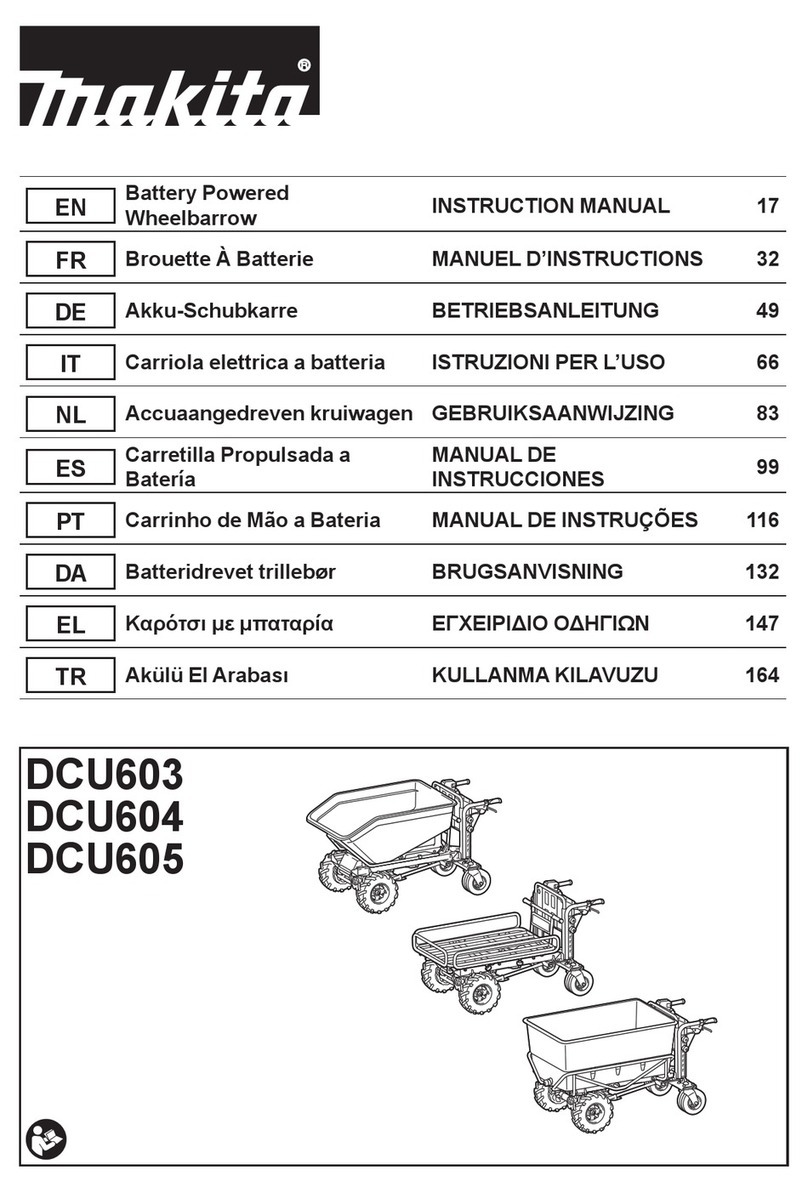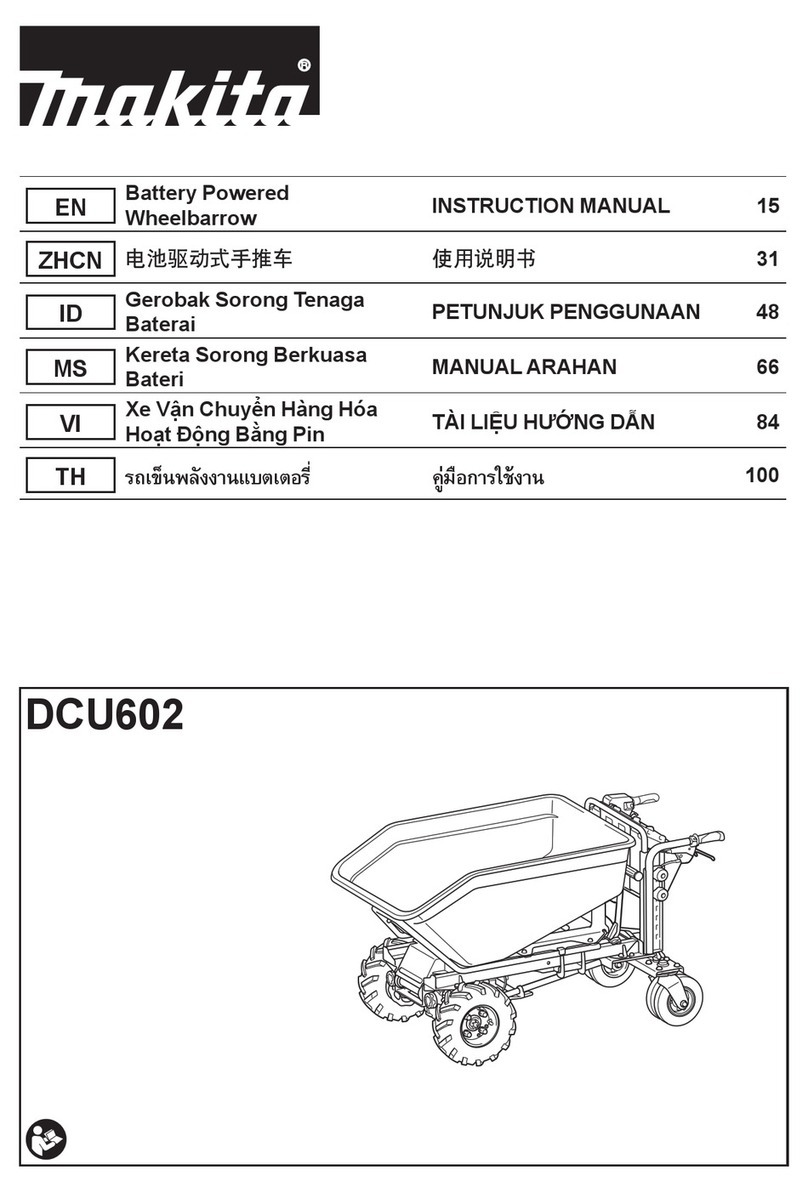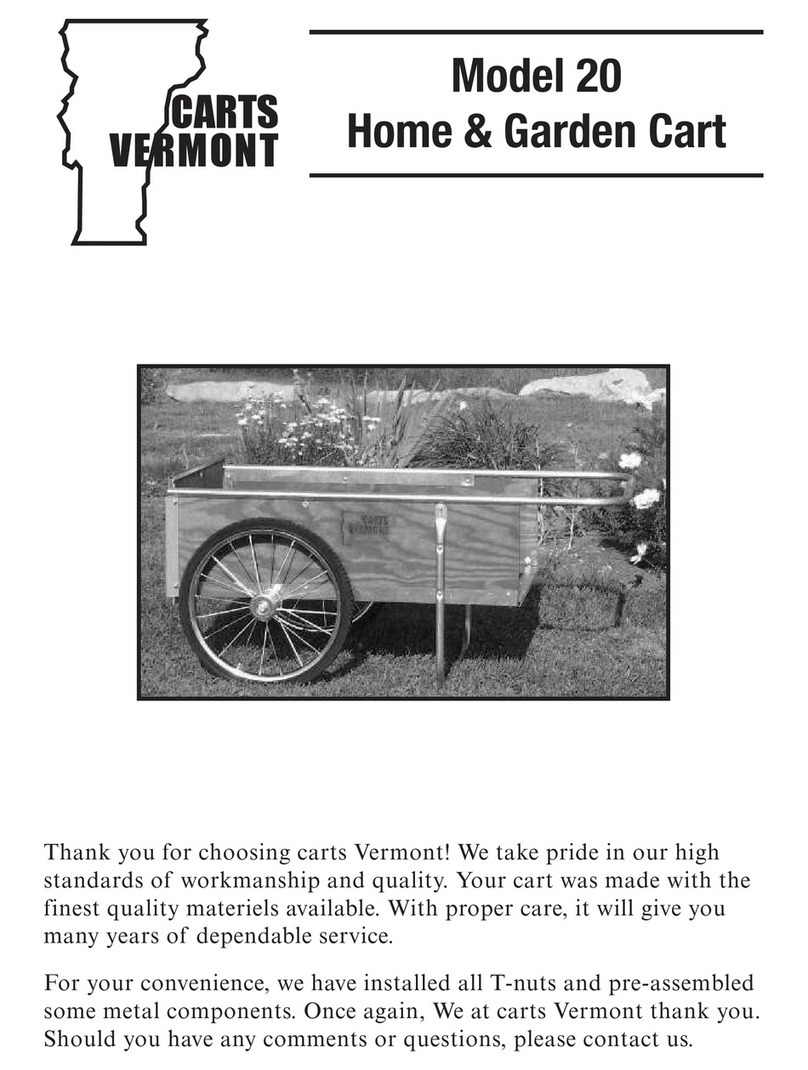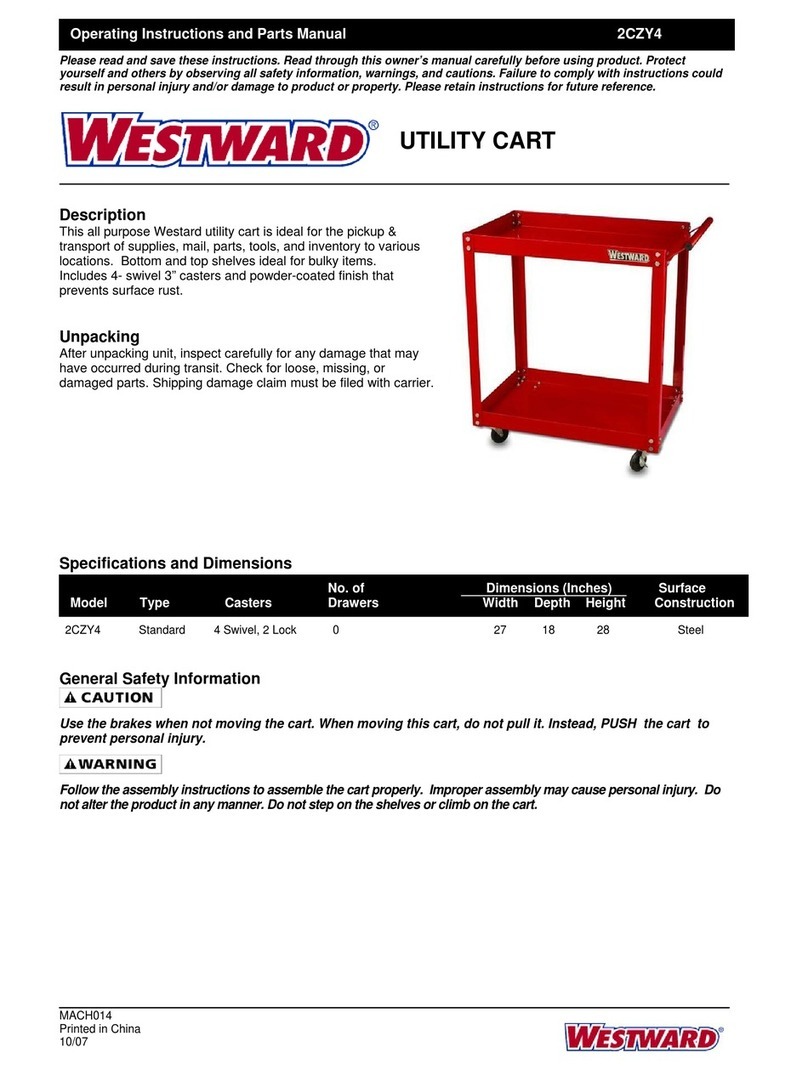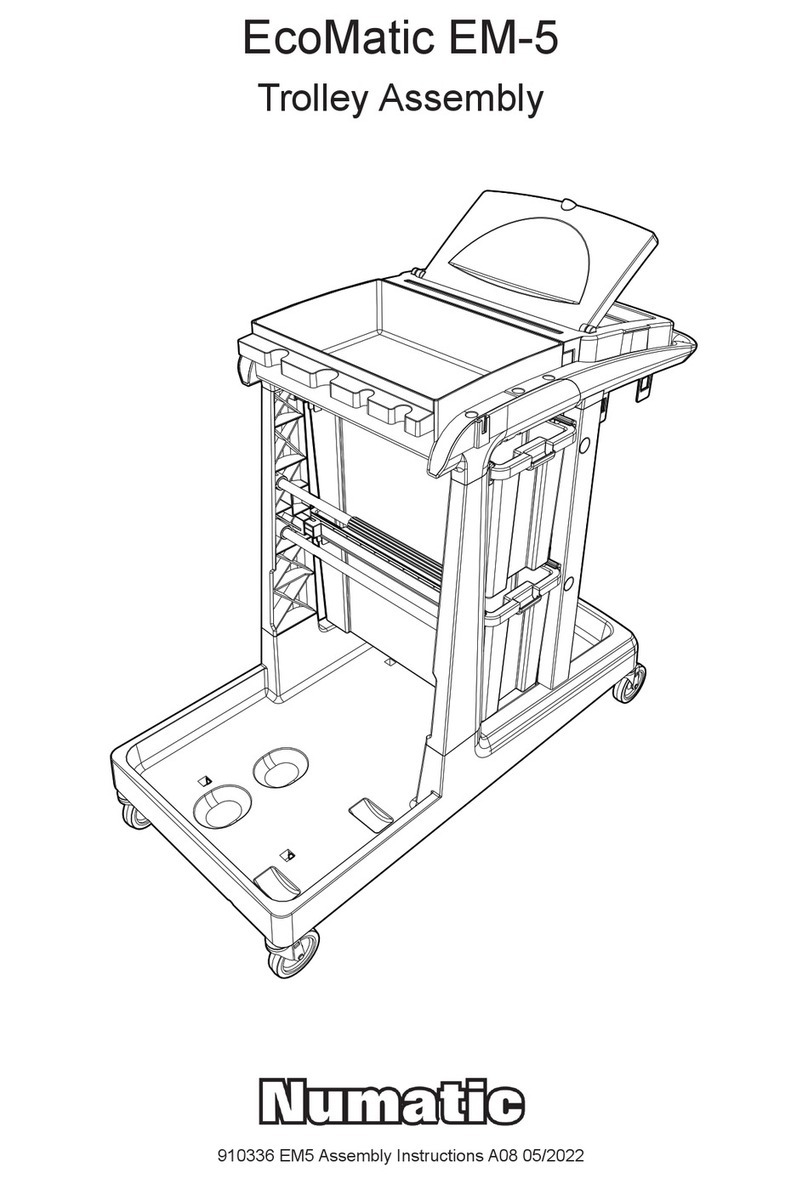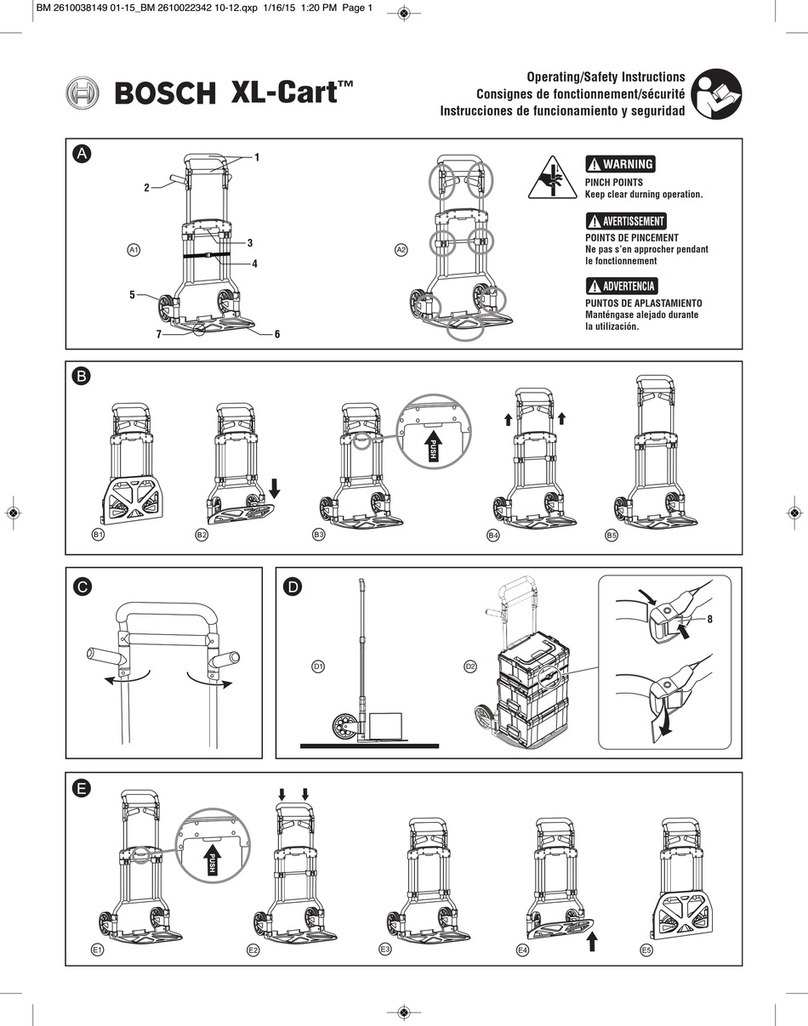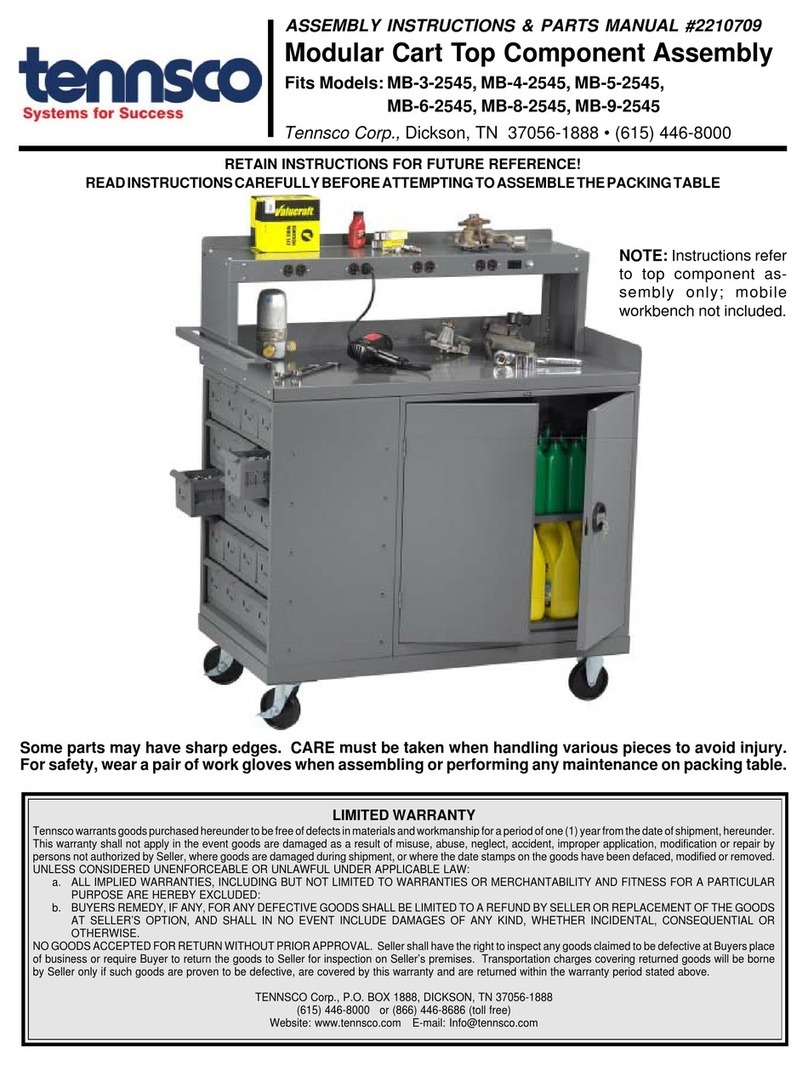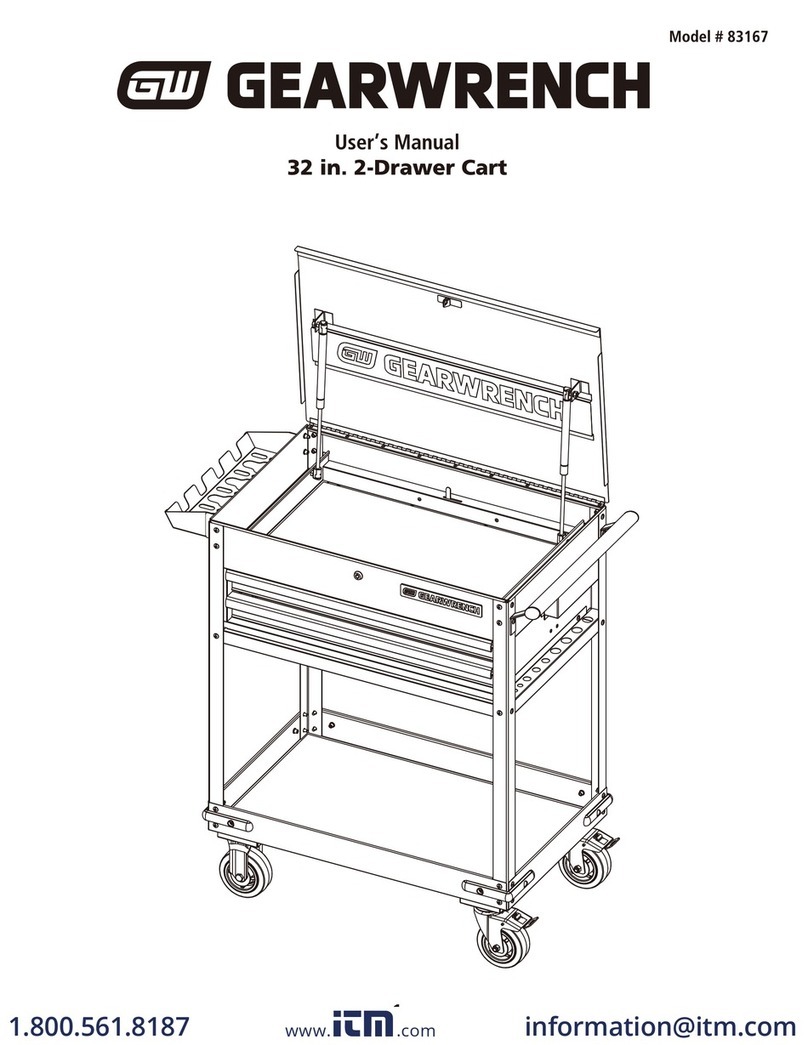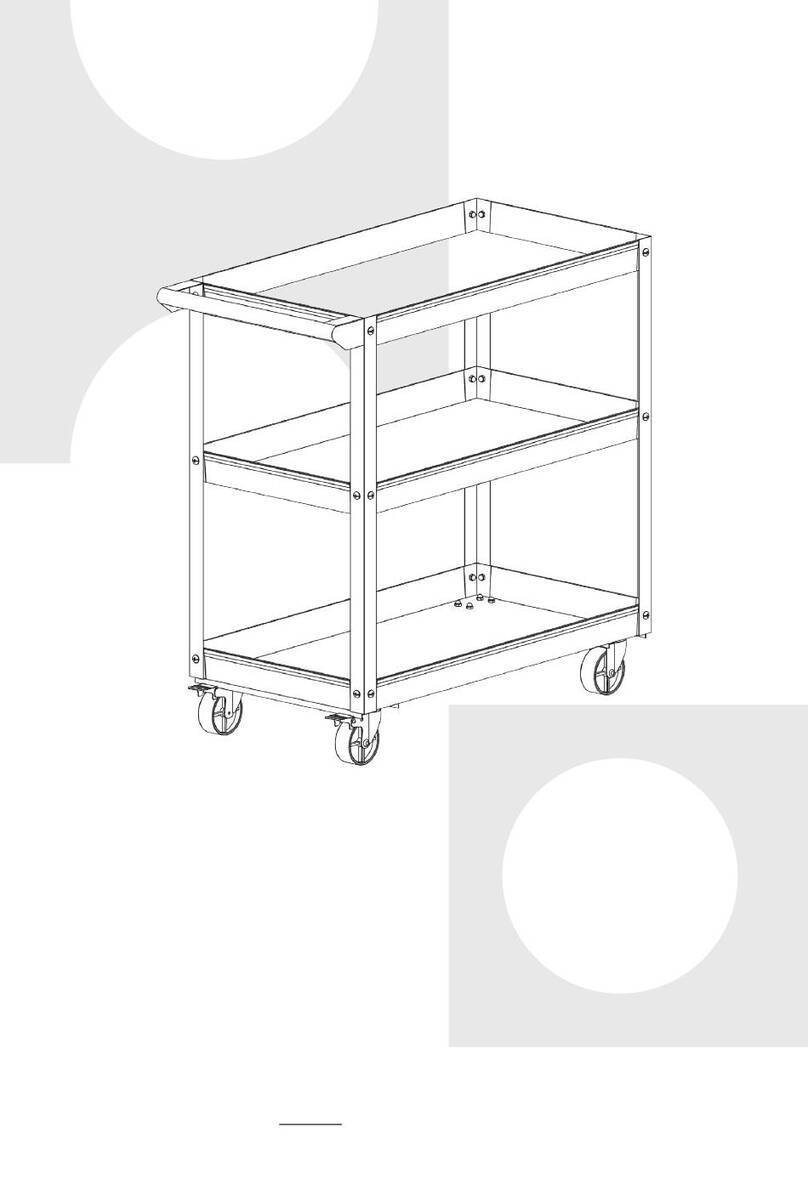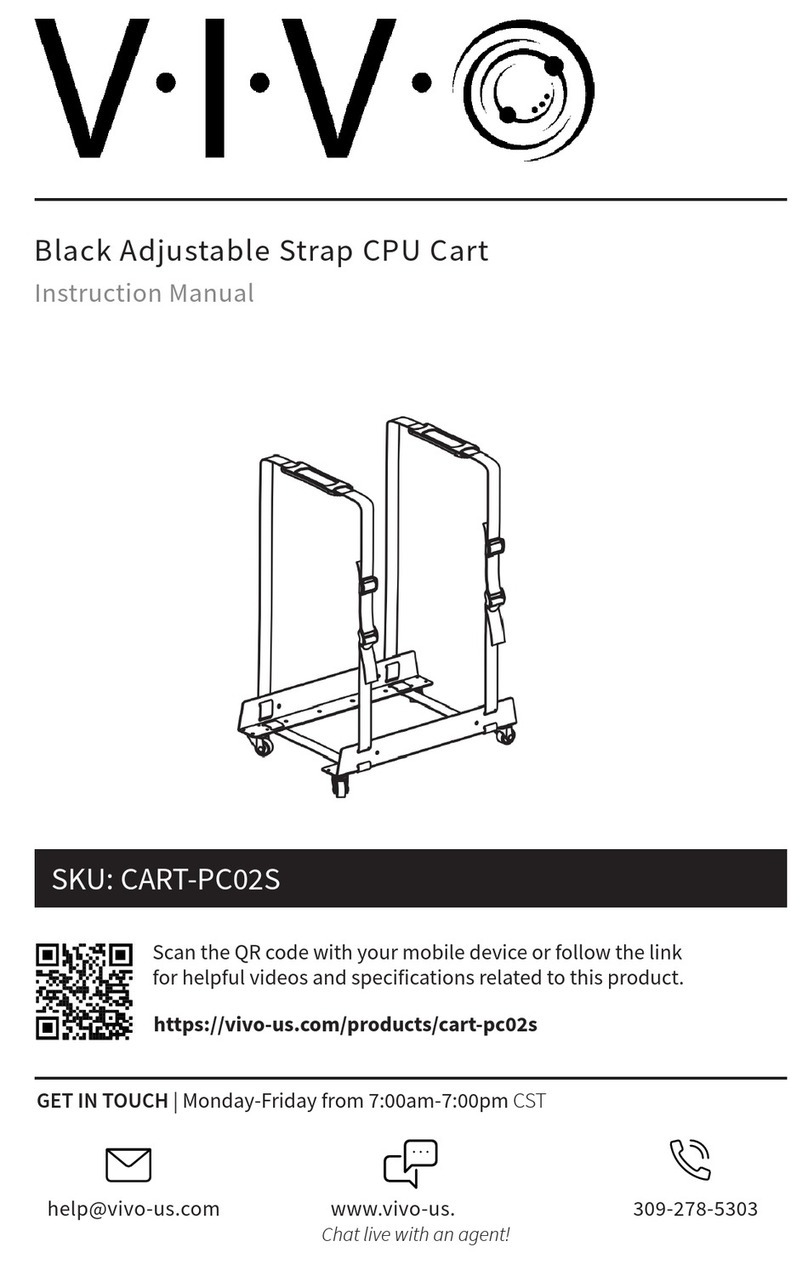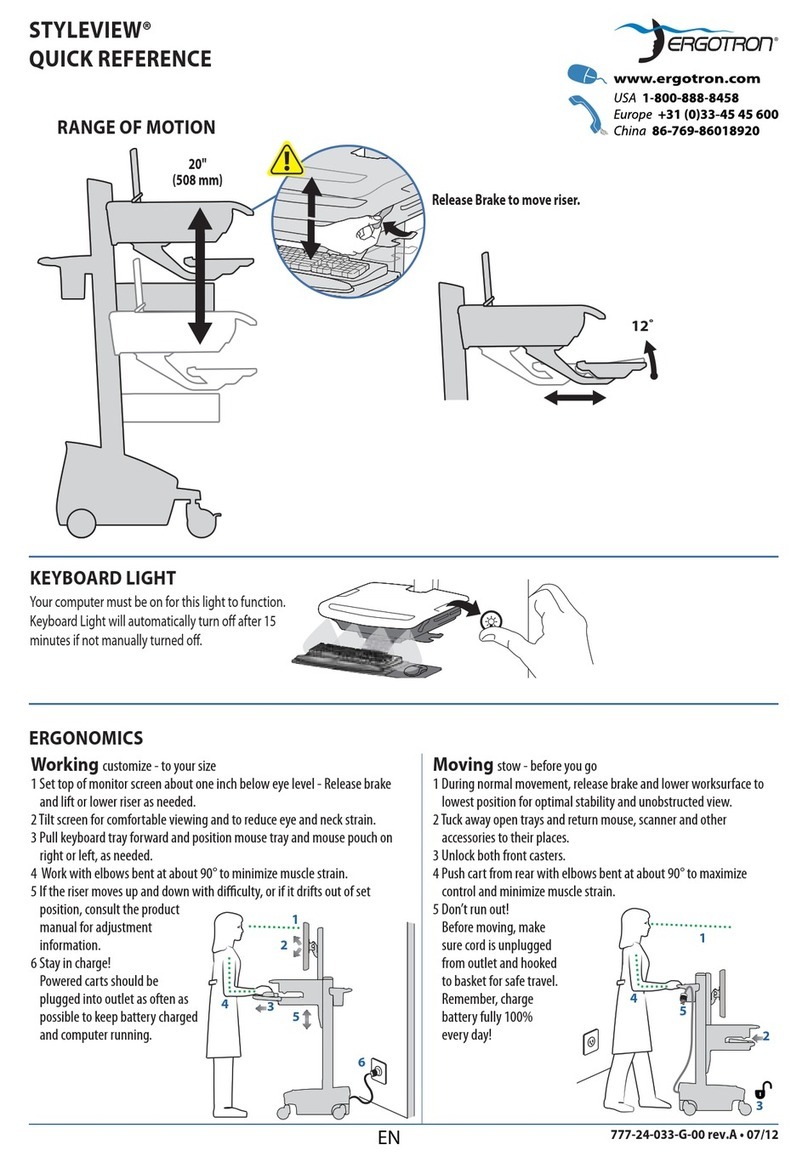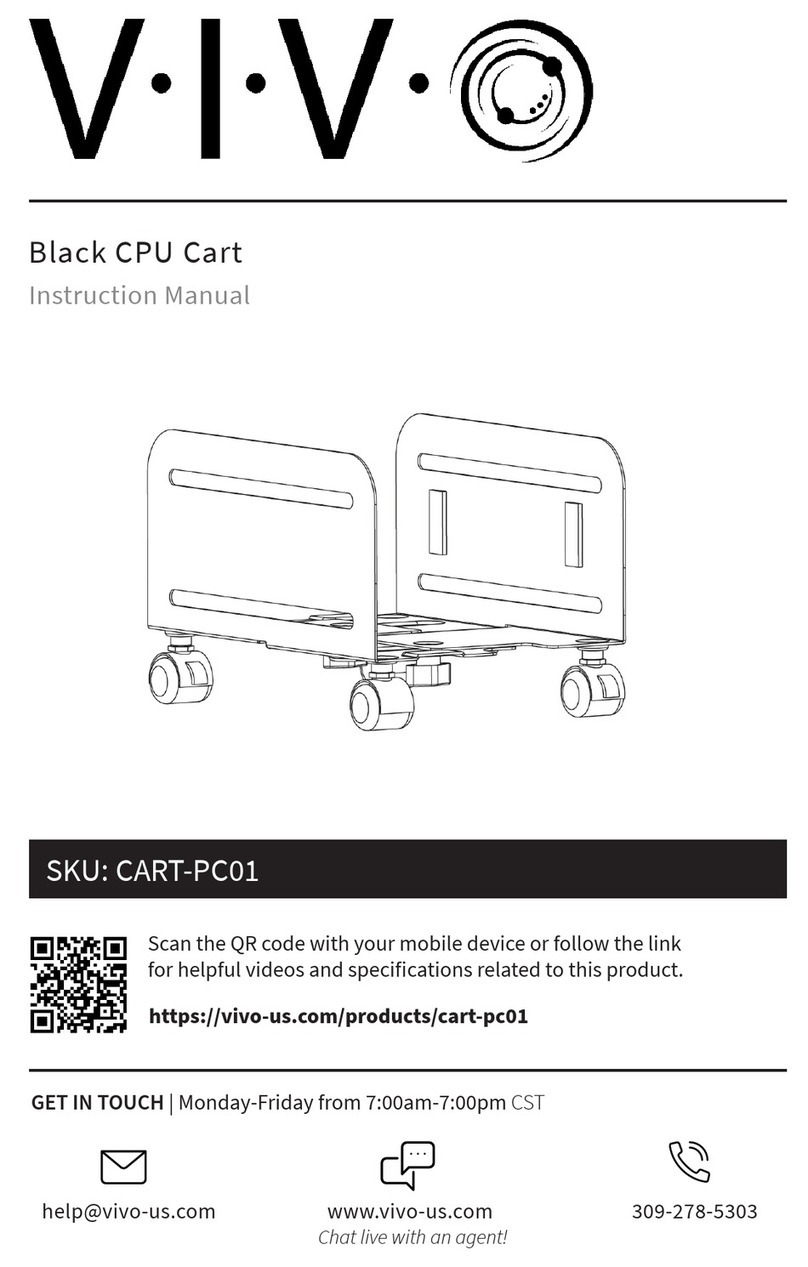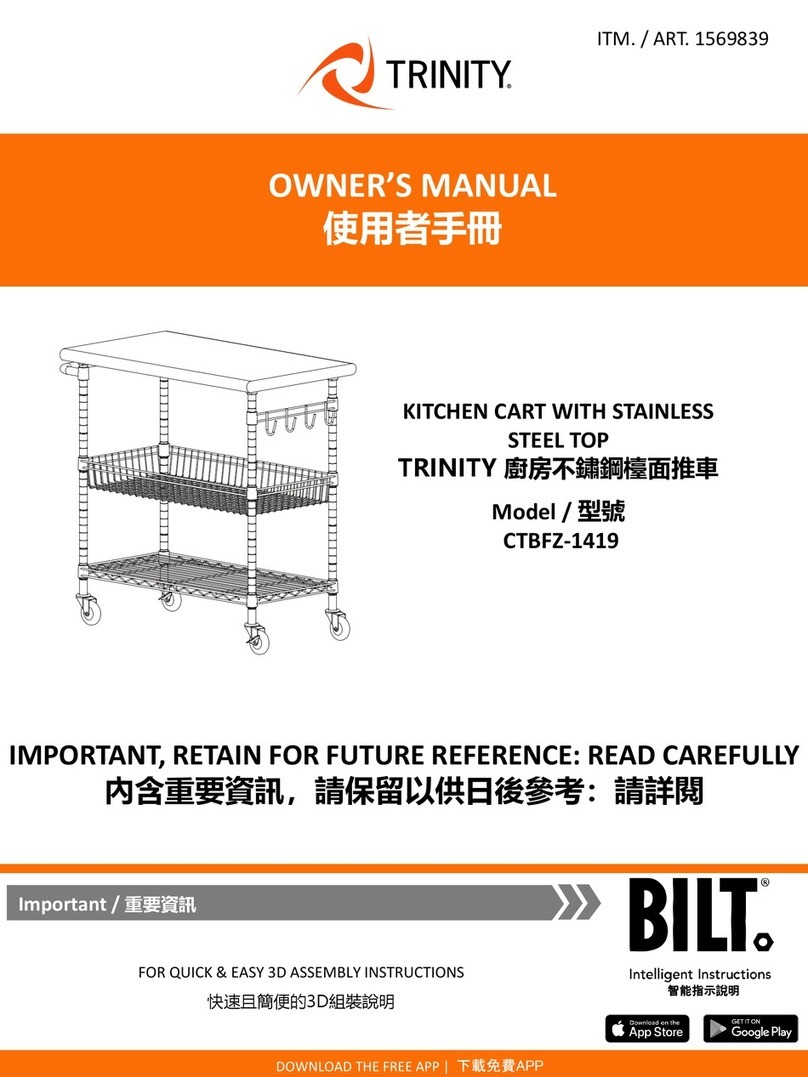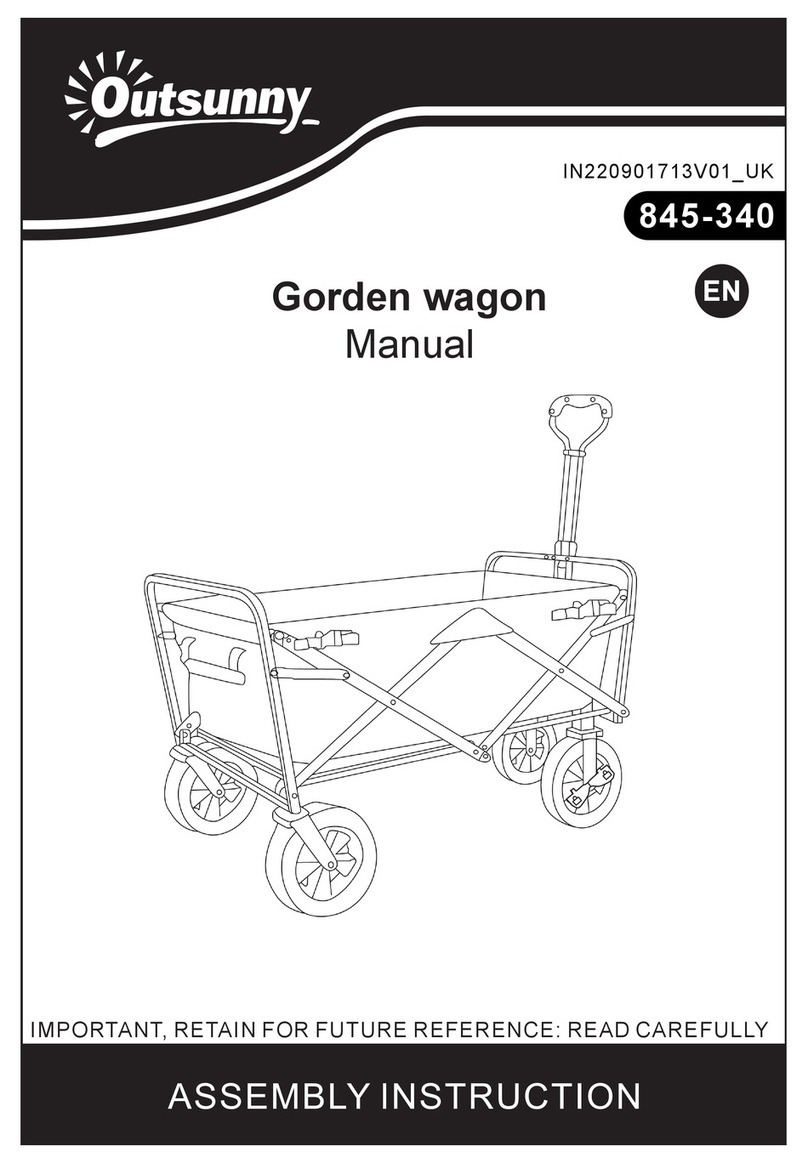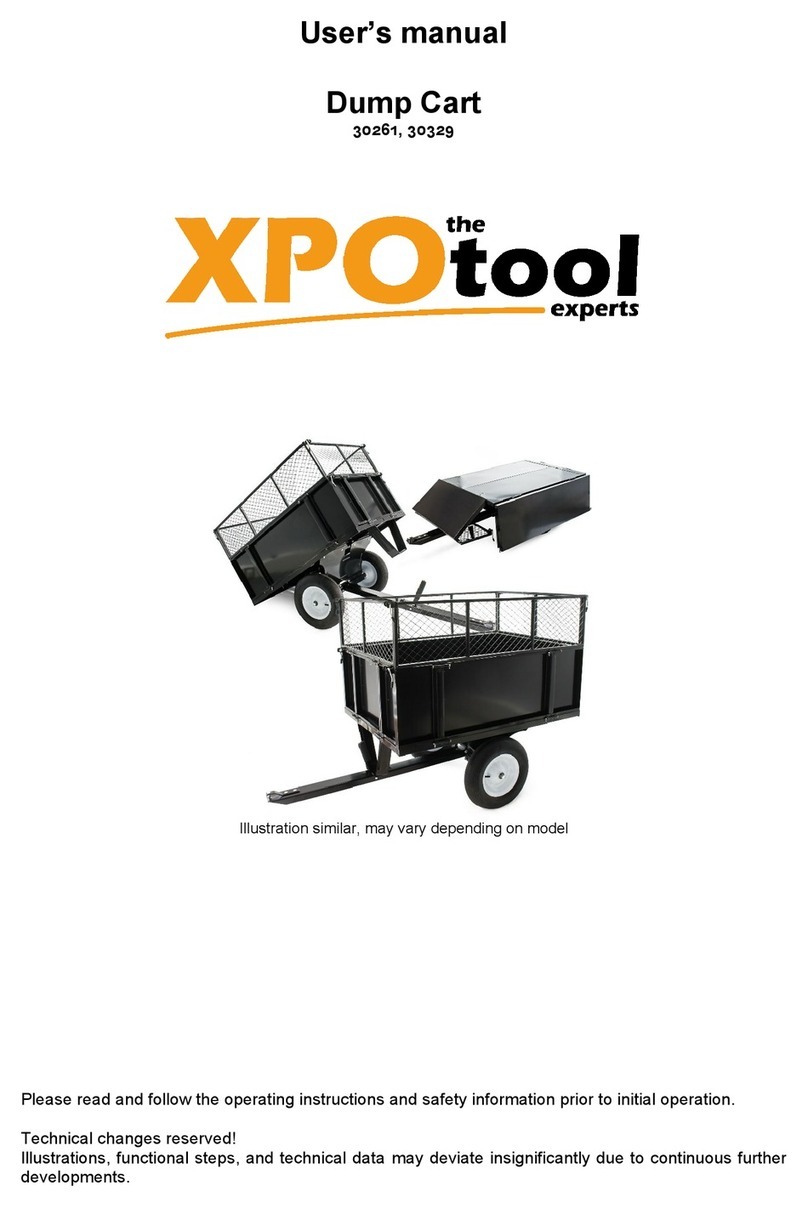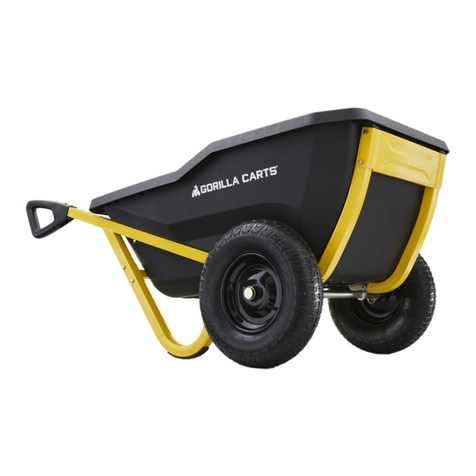
6ENGLISH
Battery powered wheelbarrow safety
warnings
1.
While operating the machine, always wear non-
slip and protective footwear. Non-skid, closed-toed
safety boots and shoes will reduce the risk of injury.
2. Inspect pathway before hauling objects/mate-
rials. Familiarizing yourself with the pathway and
ensuring it is wide enough to safely navigate the
machine under load will help reduce losing control
of the machine.
3. Use extreme caution on slippery, loose and
unstable terrain. Wet and slippery surfaces, such
as wet grassy areas, snow or ice, and loose and
unstable terrain, such as sand or gravel surfaces,
may cause the machine to lose traction and may
adversely aect steering, braking and stability.
4. Do not operate the machine on excessively
steep slopes. This reduces the risk of loss of
control, slipping and falling which may result in
personal injury. Slopes greater than the maxi-
mum recommended grade and side grades may
increase the risk of instability and may adversely
aect the ability to stop safely.
5. When working on slopes, always be sure of
your footing, always work across the face
of slopes, never up or down, and exercise
extreme caution when changing direction. This
reduces the risk of loss of control, slipping and
falling which may result in personal injury.
6. Whenever possible, use level areas for stop-
ping, loading and unloading and never leave
machine unattended on a slope. The machine is
more unstable when resting on a slope than when
resting on a level surface.
7. When leaving the machine unattended, set
parking brake once the machine is located in a
safe stopping area. The parking brake prevents
unwanted movement of the front wheel and can
improve stability.
8.
Ensure that ramps are clean, strong and secure.
In order to reduce the risk of injury, all ramps must
be clear of loose debris and strong enough to
withstand the weight of anticipated loads that will
be moved over them. They must have adequate
blocking underneath and to both sides to eliminate
deections and side-to-side movement under load.
All ramps must be wide enough to have sure foot-
ing while hauling loads across them.
9. Ensure all locking screws are tightly secure
before using. Locking screws on the rear wheels
and open-type carrier front and side walls must be
secure to prevent unwanted movement of these
adjustable parts of the machine.
10. Never operate the machine in an overloaded
condition. Make sure the machine has the proper
capacity rating for the objects or materials that
have to be hauled. Excessive loads will make
the machine more dicult to maneuver and stop,
will increase stopping time and distance, and will
increase the risk of instability.
11. Never operate your machine in an over stacked
condition. Stacking material above the tray rim or
over the sides of the tray can cause the machine
to be uncontrollably out of balance and control.
12. Use containers and tie-downs to secure loads.
Loose and/or insecure loads are more likely
to shift which can result in loss of stability and
control.
13. Always maintain a rm grip on handles. Loss of
control can increase the risk of personal injury.
14. Remove safety key when not in use. The safety
key prevents unwanted, powered use of the
machine, such as by children or other untrained
or unauthorized persons. Without the key, electric
power cannot be turned “on”.
15. This machine cannot be used on public roads.
Use of the wheelbarrow on a public road is unlaw-
ful and could result in local jurisdiction penalties in
addition it could result in personal injury.
16. Use a sturdy plate with anti-slip and detach-
ment prevention function when loading and/
or unloading this machine for transportation,
or moving this machine between dierent
levels. Make sure the plate inclination does not
exceed 12°, and operate the machine slowly
and carefully. Unstable and quick operation
may result in overturn and/or falling.
17. Do not disassemble, repair, or modify this
machine.
Preparation
1. Before operating the machine, make sure that
there are no people around the machine.
2. Before operating the machine, perform
the inspections referring to the section for
maintenance.
Operation
1. When operating the machine, stand behind the
machine and hold the handles with both hands
rmly.
2. Do not operate the machine while riding on the
machine.
3. Do not allow others to ride on the machine.
4.
When operating the machine in reverse and
walking backward, watch behind you and watch
your step, and be careful not to slip or trip.
5. Do not use the machine when visibility is poor
because there is a risk of striking obstacles.
6. When operating the machine on rough ground
or going over the level dierence of the road,
decrease speed and exercise caution.
7. When using the machine, avoid soft ground
to prevent overturn due to the shoulder of the
road collapsing.
8. Do not operate the machine on slopes greater
than 12°.
9.
If you nd an abnormality, stop the machine on
at ground. Before inspecting the machine, lock
the brake lever, and then turn the power o.
10. Before operating the machine, make sure that
the handle of the dump unit is fully pulled
down and completely locked. If the lock is
incomplete, there is a risk of accident or injury as
the carrier or bucket may be tilted and the objects
fall when going downhill.
11. When operating the machine near walls, be
careful not to get your hands caught between
the handle and the wall.
